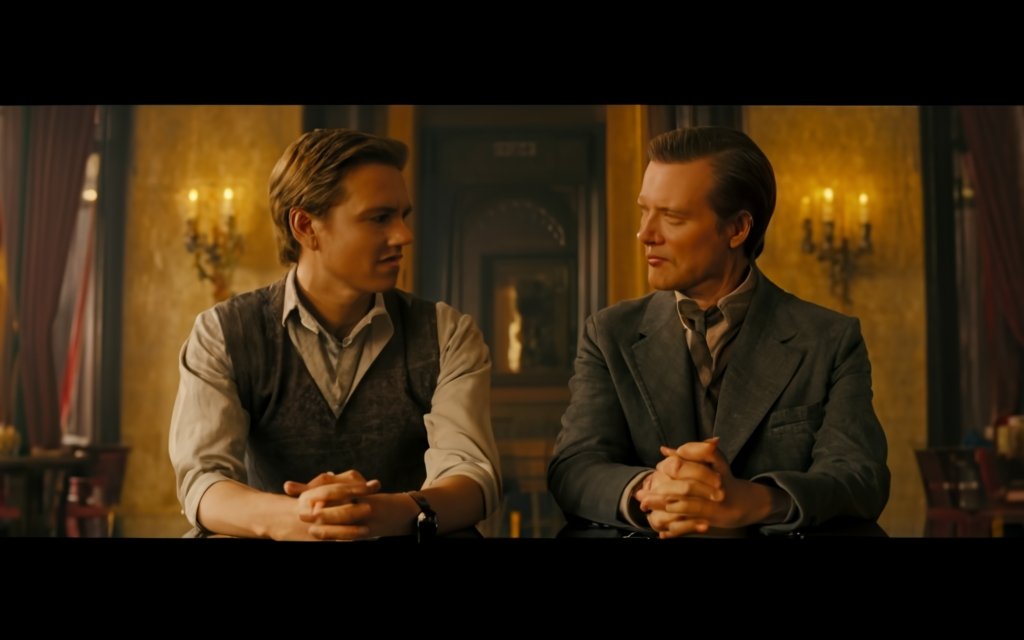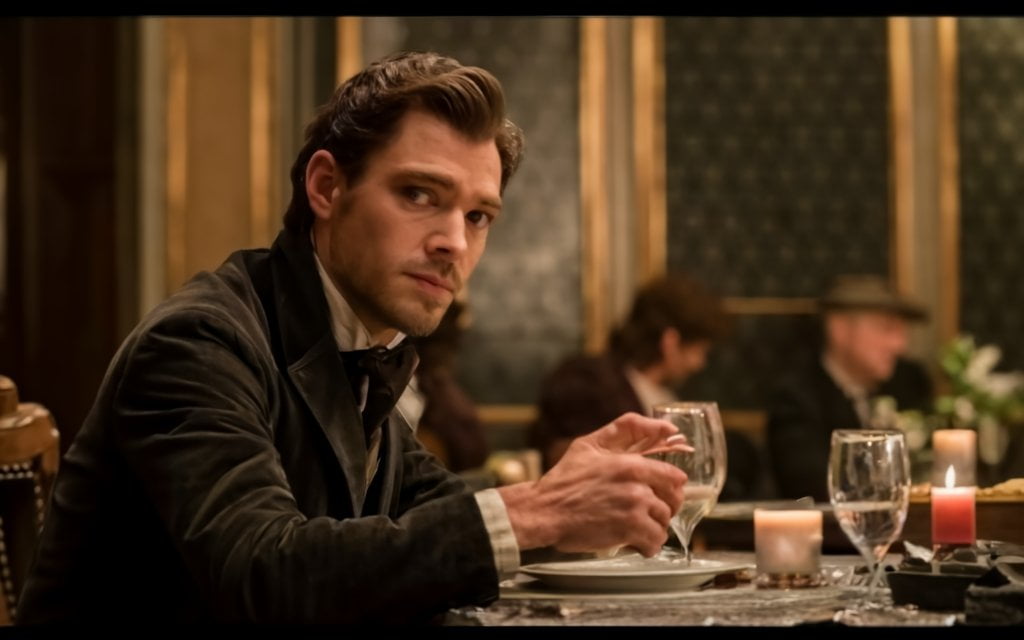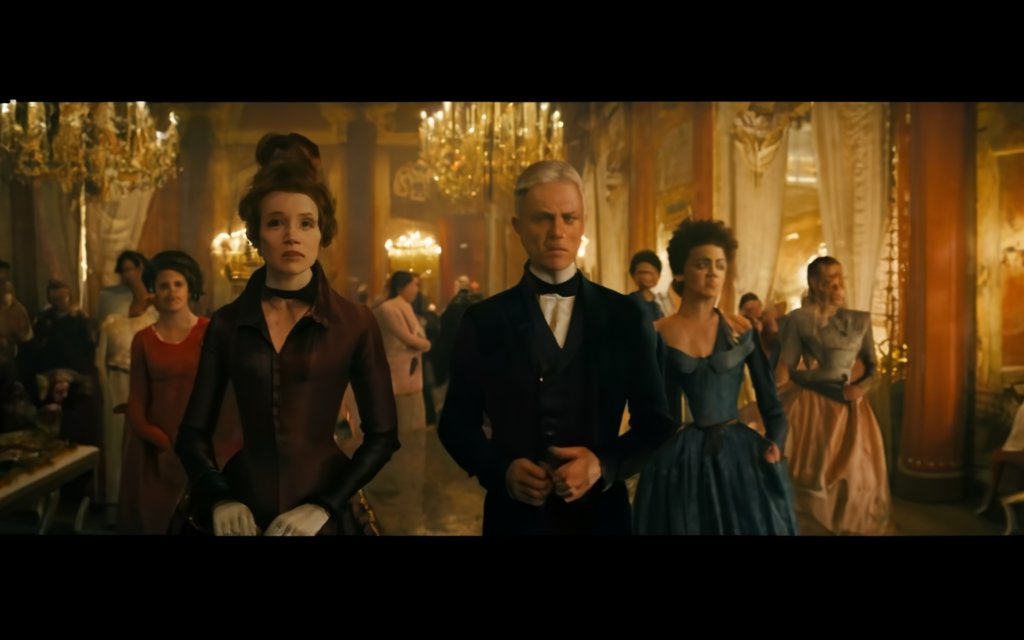Dive Beyond the Surface: Unraveling the Secrets of Cinematic Beauty.
Have you ever been entranced by a movie, not just by the story, but by the way it looked? The way the light danced across faces, colors whispered emotions and camera movements mirrored the beating of your heart?
This, my friends, is the magic of visual storytelling, the invisible hand guiding you through emotions and worlds crafted from light and shadow. But what makes a movie truly “good-looking”? Is it just a matter of big budgets and fancy CGI?
Absolutely not! In this journey, we’ll crack open the treasure chest of cinema, unveiling the secrets of cinematic beauty and discovering how the interplay of artistic vision, technical mastery, and narrative power weaves the spell that leaves us breathless.
So, fasten your seatbelts, cinephiles, because we’re about to embark on a dazzling exploration of the visual language that makes movies magical.
A movie’s visual appeal involves a whole orchestra of elements working in harmony. Here are some key ones that can make a movie look stunning:
Visual Techniques:
- Cinematography: This encompasses camera angles, movement, framing, and shot composition. Skilled cinematographers use these techniques to create visually interesting and emotive frames, guiding the viewer’s attention and subtly conveying the story’s mood. Think sweeping landscapes in Westerns, tight close-ups in thrillers, or dynamic action sequences in superhero movies.
- Lighting: From sun-drenched fields to moody shadows, lighting sets the atmosphere and highlights key aspects of the scene. Different lighting techniques, like backlighting or chiaroscuro, can create depth, drama, and emotional weight.

- Color palette: The film’s overall color scheme can be vibrant and saturated, muted and desaturated, or even monochromatic, depending on the genre and desired tone. A carefully chosen palette can evoke specific emotions, establish settings, and visually unify the film.
- Visual effects: While CGI and special effects can sometimes be overused when employed skillfully, they can enhance the narrative and create breathtaking visuals. Whether it’s epic fantasy creatures or realistic cityscapes, good visual effects can seamlessly blend with practical elements and immerse the viewer in the film’s world.
Production Design:
- Set design: From futuristic metropolises to historical period pieces, the sets and locations play a crucial role in establishing the film’s world and immersing the viewer. Attention to detail in architecture, props, and furnishings adds authenticity and visual richness.
- Costumes: Clothing can speak volumes about characters’ personalities, social status, and the film’s historical context. Well-designed costumes contribute to the overall aesthetic and can even become iconic, like Darth Vader’s helmet or Audrey Hepburn’s little black dress.
Post-Production Techniques:
- Editing: The way shots are strung together, the pacing, and the use of transitions all contribute to the film’s visual flow and rhythm. Seamless editing keeps the viewer engaged, while creative cuts can emphasize emotions or build tension.
- Color grading: This process further refines the film’s look by adjusting color tone, contrast, and saturation. Color grading can create a specific mood, enhance the realism of certain scenes, and add a stylistic touch.
Remember, the “goodness” of a film’s look is subjective and depends on individual preferences and the film’s genre. A gritty crime thriller might be praised for its raw, realistic aesthetic, while a fantasy film might be lauded for its vibrant, fantastical visuals. What matters most is that the visual elements work together to effectively tell the story and evoke the desired emotions in the viewer.
I. Introduction: The Allure of the Moving Image
Imagine it: you’re sucked into a sun-drenched Italian villa, the camera gliding alongside a laughing Sophia Loren, her scarlet dress a brushstroke against the vibrant bougainvillea. Or you’re perched on the edge of your seat, heart pounding as a single spotlight illuminates Benedict Cumberbatch in a rain-slicked alleyway, fear etched on his face.
This, my friends, is the magic of movies, the way they transport us to different worlds and evoke a kaleidoscope of emotions with just light, movement, and a flicker of celluloid.

But what makes a movie look truly good? Is it just a matter of big budgets and fancy CGI? I, your resident film fanatic and self-proclaimed cinephile, say emphatically no. A visually stunning movie is like a perfectly balanced symphony, where every element, from the camerawork to the costume design, works in harmony to tell the story and captivate the audience.
II. The Master Craftsmen: Unveiling the Key Players
Think of these guys as the rock stars behind the silver screen. They don’t wear leather jackets or wield guitars, but their artistic vision and technical expertise is what breathe life into a script and transform it into visual poetry.
Meet the MVPs:
- The Cinematographer: This is the artist who paints with light, using camera angles, movement, and lighting to guide your eye and evoke emotions. Think Chiaroscuro’s dramatic shadows in “The Godfather” or the sweeping landscapes of Emmanuel Lubezki’s work in “Birdman.”
Cinematography Techniques:
| Technique | Example | Impact |
|---|---|---|
| Dutch Angle: Tilting the camera to create a sense of unease or disorientation. | The interrogation scene in “The Shining” | Heightens tension and psychological distress. |
| Long Take: Holding the camera on a single shot for an extended period. | The D-Day landing sequence in “Dunkirk” | Creates a sense of immediacy and immerses the viewer in the chaos. |
| Slow Motion: Stretching out time to accentuate specific moments. | The bullet-ballet scene in “The Matrix” | Adds a balletic grace and emphasizes the superhuman reflexes. |
- The Production Designer: This is the world-builder, the magician who conjures up the film’s setting, from bustling futuristic metropolises to dusty Wild West towns. Think the lavish Art Deco interiors of “The Great Gatsby” or the gritty realism of the streets in “Parasite.”
Production Design Elements:
| Element | Example | Impact |
|---|---|---|
| Set Design: Creating the physical environment where the story unfolds. | The Death Star in “Star Wars” | Establishes the scale and power of the Empire. |
| Costumes: Clothing characters to reflect their personalities and social status. | Audrey Hepburn’s little black dress in “Breakfast at Tiffany’s” | Defines her timeless elegance and sophistication. |
| Props: Imbuing objects with symbolic meaning and historical context. | The briefcase in “Pulp Fiction” | Serves as a mysterious catalyst and source of tension. |
These are just a taste of the creative forces behind a film’s visual appeal. Stay tuned for Part 2, where we’ll delve deeper into the Visual Toolkit and unlock the secrets of cinematic beauty, using examples from real movies and even a dash of practical filmmaking tips. Remember, a great movie isn’t just about special effects; it’s about harnessing the power of visuals to tell a story that lingers long after the credits roll.
Get ready to be dazzled!
P.S. Don’t forget to drop a comment below and share your favorite examples of films that blew you away visually. Let’s get this cinephile conversation rolling!
III. The Visual Toolkit: Unveiling the Secrets of Cinematic Beauty.
Imagine stepping into a movie theater and feeling like you’ve stumbled into a portal to another world. That’s the spellbinding power of the visual toolkit, an arsenal of techniques wielded by filmmakers to manipulate light, movement, and design to weave their narrative magic. Let’s crack open this treasure chest and discover the gems within:
A. The Language of Light:
- Lighting Techniques: Think of chiaroscuro’s dramatic shadows in “The Departed” or the sun-drenched landscapes of “Thelma and Louise.” Lighting isn’t just about illumination; it sets the mood, defines characters, and guides the viewer’s attention.
- Color Palettes: Warm tones radiate love and optimism in “Crazy Rich Asians,” while cool blues and greens evoke suspense in “Blade Runner.” Color choices create a subconscious emotional map, influencing how we perceive the story.
- Composition and Framing: From the rule of thirds in “The Grand Budapest Hotel” to the dynamic diagonals of “Mad Max: Fury Road,” composition isn’t just about aesthetics; it directs the viewer’s eye and emphasizes specific elements within the scene.
B. The Art of Movement:
- Camera Placement and Movement: A static shot in “Moonlight” evokes introspection, while the shaky cam in “Cloverfield” amplifies our fear. The camera becomes a character itself, guiding us through the story and mirroring the emotional ebb and flow.
- Editing Rhythms: Think the snappy cuts of “The Bourne Identity” or the slow, contemplative pace of “2001: A Space Odyssey.” Editing is the invisible hand, sculpting the film’s tempo and manipulating our emotional response.
C. Worldbuilding Through Design:
- Set Design: Stepping into the ornate ballroom of “Beauty and the Beast” or the claustrophobic apartment in “Parasite” tells us volumes about the characters and their environments. Set design is world-building at its finest, immersing us in the film’s reality.
- Costume Design: From the futuristic armor in “Star Wars” to the flamboyant gowns of “Marie Antoinette,” costumes are more than just threads; they’re visual storytelling tools, revealing personalities, social status, and historical context.
- Visual Effects: Whether it’s the awe-inspiring dinosaurs of “Jurassic Park” or the fantastical creatures of “Avatar,” visual effects push the boundaries of reality and imagination, expanding the narrative possibilities and transporting us to impossible worlds.
Note: This is just a basic framework, feel free to add specific examples, or personal anecdotes, or delve deeper into individual techniques based on your preferences.
IV. Case Studies: Deconstructing Visual Brilliance.
Now, let’s put these tools to the test by dissecting two films that master the art of visual storytelling:
A. “La La Land” (2016): A Symphony of Color and Light.
Damien Chazelle’s love letter to Los Angeles explodes onto the screen with vibrant colors, dreamlike sequences, and breathtaking dance numbers. The warm California sun bathes Emma Stone and Ryan Gosling’s on-screen romance in a golden glow, while the contrasting blue tones of night reveal their struggles and anxieties.

The camera pirouettes alongside them, mirroring their journey with dynamic movements and graceful pans. It’s a visually audacious masterpiece, where every frame sings with the rhythm of hope and heartbreak.
B. “Blade Runner 2049” (2017): A Neo-Noir Odyssey.
Denis Villeneuve’s neo-noir sequel plunges us into a dystopian Los Angeles bathed in neon and shrouded in perpetual twilight. The muted color palette reflects the film’s bleak tone, while the rain-slicked streets and imposing skyscrapers evoke a sense of isolation and urban decay.
The camera lingers on Ryan Gosling’s melancholic protagonist, its slow movements mirroring his existential contemplation. Each scene is a meticulously crafted tableau, showcasing the mastery of light, shadow, and composition to build a hauntingly beautiful world.
Note: These are just two examples. You can choose other films based on your own interests and expertise.
By analyzing these contrasting examples, we see how visual storytelling thrives in diversity. Whether it’s the vibrant optimism of “La La Land” or the gritty noir of “Blade Runner 2049,” the key lies in using the visual toolkit to enhance the narrative and evoke the desired emotions in the viewer.
Stay tuned for Part V, where we’ll explore the heart of visual storytelling and reveal the secret sauce that truly makes a movie look good!
V. Beyond the Technical: The Heart of Visual Storytelling.
I’ve dazzled you with techniques and case studies, but let’s hit pause on the technical wizardry and dive into the soul of the matter: visual storytelling isn’t about fancy camera tricks or eye-popping CGI. It’s about using those tools to serve the story, to amplify its themes, and to resonate with the viewer on a deeper level.
Cinema’s True Magic:
- Emotional Resonance: A visually stunning film isn’t just pretty to look at; it makes you feel something. It stays with you long after the credits roll, not because of its technical prowess, but because it touched a chord within you.
- Thematic Coherence: The visuals shouldn’t just be pretty; they should reinforce the film’s central themes and messages. Every frame, every color choice, every camera movement should contribute to the larger narrative tapestry.
- Artistic Vision: The most visually captivating films are born from a clear artistic vision, a unique perspective that guides every creative decision. It’s the director’s fingerprint, their signature brushstroke on the canvas.
Call to Discernment:
As viewers, we’re bombarded with visual stimuli, but true visual storytelling demands more than just passive consumption. It invites us to:
- Slow down and appreciate: Resist the urge to rush through scenes. Savor the artistry and intention behind each frame.
- Look beyond the surface: Don’t just admire the pretty pictures; delve into the symbolism, the subtext, and the emotional undercurrents that the visuals convey.
- Bring your own perspective: Your unique experiences and interpretations enrich the visual experience. Engage with the film on a personal level and allow it to spark your own imagination.

In the end, the heart of visual storytelling isn’t about pixels or lenses; it’s about connecting with the human experience through the power of images. It’s about crafting moments that linger, scenes that stir our souls, and stories that imprint themselves on our hearts.
VI. A Filmmaker’s Toolkit: Practical Tips.
For those aspiring filmmakers eager to create visually compelling stories, here are a few nuggets of wisdom from my experience:
- Develop Your Visual Literacy: Watch films critically, paying attention to how they use cinematography, editing, and design to create meaning. Study art, photography, and other visual mediums to expand your visual vocabulary.
- Find Your Unique Style: Experiment with different techniques and aesthetics to discover your own artistic voice. Don’t be afraid to push boundaries and challenge conventions.
- Collaborate with Talented Artists: Surround yourself with cinematographers, production designers, and other visual artists who share your passion for visual storytelling. Learn from each other and push each other to create even greater work.
- Embrace Technology and Innovation: Stay current with the latest filmmaking tools and techniques, but don’t let technology overshadow the story. Use it to enhance your vision, not dictate it.
- Tell Stories That Matter: Visuals are powerful, but they’re ultimately a means to an end. Focus on telling stories that resonate with you and have the potential to move others.
Remember, visual mastery is a journey, not a destination. Keep experimenting, keep learning, and keep pushing the boundaries of your visual imagination. The world is waiting for your stories to come to life!
Conclusion: See with Your Heart, Create with Vision.
We’ve traversed the landscape of visual techniques, witnessed the mastery of the film’s architects, and explored the heart that beats beneath the technical brilliance. Now, remember this: a “good-looking” movie isn’t just about aesthetics; it’s a tapestry woven with intention, where every frame whispers the story’s secrets and resonates with the human experience.
As viewers, let’s approach movies with discerning eyes, appreciating the artistry and seeking the emotional depths below the surface. And for aspiring filmmakers, remember: visual mastery is a journey, not a destination.
Keep honing your craft, experimenting with your voice, and letting your vision guide you. The silver screen awaits, and it longs to be filled with stories told through the language of light, movement, and a beating heart. Go forth, create, and dazzle us with your own cinematic magic!

I am a highly experienced film and media person who has a great deal to offer to like-minded individuals. Currently working on several exciting projects, I am a film and media practitioner for over a decade. I have achieved a great deal of success in my professional career.








